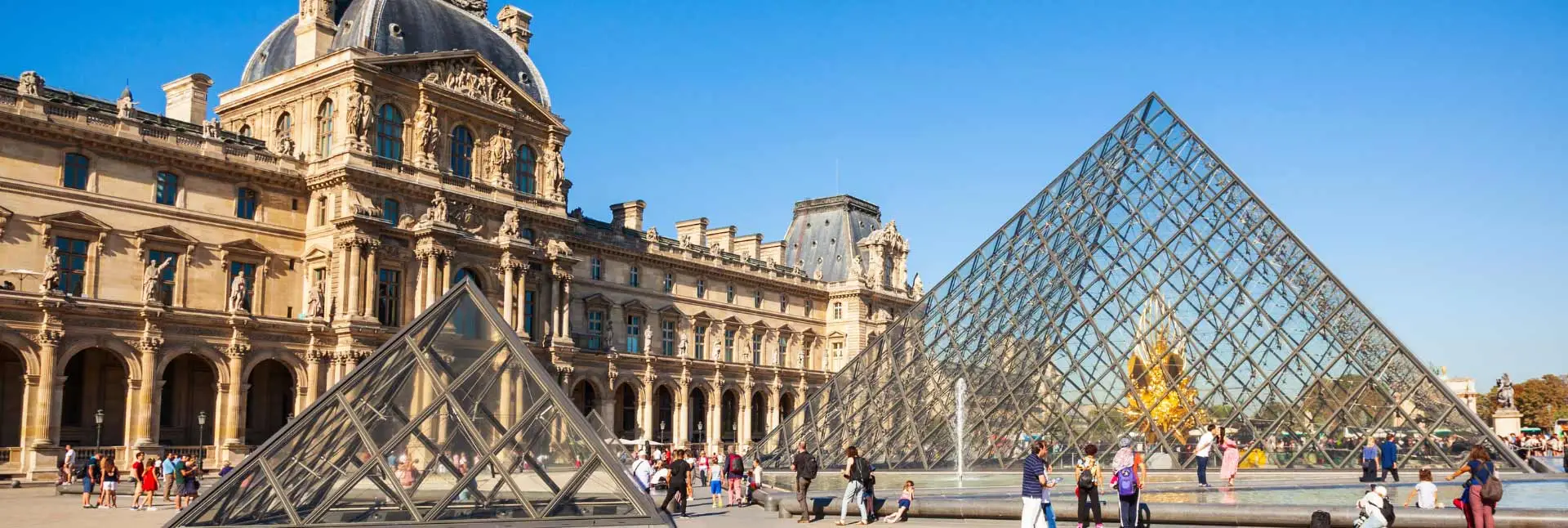
Curiosities to know before visiting the Louvre Museum
This impressive museum not only holds artistic treasures but also secrets that captivate millions of visitors every year. Before visiting the Louvre Museum, we invite you to discover some fun facts that will make your visit unforgettable.
The Louvre Museum in Paris was a medieval fortress
Its history began in the 12th century when it was built as a fortress to protect Paris from potential invasions. Under the reign of Charles V, the fortress was transformed into a royal residence and later into the splendid palace we know today.
It was in 1793, during the French Revolution, that the Louvre officially became a public museum. At that time, it housed only 537 works, all from royal collections and revolutionary confiscations.
The Louvre as Ministry of Economy and Finance
But that’s not all! Although we now associate it exclusively with art, the Louvre Museum had a curious chapter in its history when it housed the French Ministry of Economy and Finance. During the 19th century, part of the palace was used for this administrative function.
It wasn’t until 1989, with the inauguration of the Pyramid and the complete reorganization of the museum, that the Ministry of Economy and Finance moved to its current location in the Bercy district, leaving the Louvre solely as a museum and not for revenue collections.
The famous glass Louvre Pyramid: a modern icon shrouded in controversy
The glass pyramid in front of the Louvre Museum entrance is one of the most recognizable structures in the world, but its construction in 1989 was not without controversy. Designed by architect Ieoh Ming Pei, this bold modern structure sharply contrasted with the palace’s classical aesthetic, sparking divided opinions among Parisians.
Today, the pyramid is not only an iconic entrance to the museum but also a masterpiece of engineering. However, one of the Louvre Museum’s fun facts is an urban legend claiming that the pyramid consists of exactly 666 panels, a number associated with the devil. This claim is false; the actual number is 673, and its geometric design allows natural light to illuminate the underground lobby.
The Mona Lisa: the mystery of a smile and a robbery
Talking about the Louvre without mentioning the Mona Lisa is unthinkable. This masterpiece by Leonardo da Vinci is undoubtedly the museum’s most-visited piece. But beyond her mysterious smile, her story is filled with surprising episodes.
In 1911, the painting was stolen by a museum employee, Vincenzo Peruggia, who intended to return it to Italy. During the investigation, authorities accused several suspects, including Pablo Picasso himself, causing a major media scandal. Finally, the artwork was recovered two years later in Florence.
Forgotten moments: when the Louvre was abandoned
Another fascinating fact about the Louvre Museum is that, although it is now the most visited museum in the world, there was a time when it was completely neglected. During the 17th century, French kings moved their official residence to Versailles, leaving the building in a state of abandonment. The palace remained without maintenance for decades until plans to turn it into a museum were revived in the 18th century.
Napoleon and his obsession with the Cana wedding
Among the many famous works in the Louvre is The Wedding at Cana, a monumental painting by Paolo Veronese measuring 6.77 x 9.94 meters. However, this masterpiece did not arrive at the Louvre in a conventional way.
During Napoleon’s military campaigns in Italy, he decided to take this artwork, ordering the painting to be cut in half to transport it more easily to Paris. Today, The Wedding at Cana remains in this state, and visitors can still see the cut in the canvas.
Learning these fun facts about the Louvre Museum before buying your tickets will make you even more eager to visit and allow you to connect more deeply with the artworks and spaces that make up this iconic place. Paris awaits you!